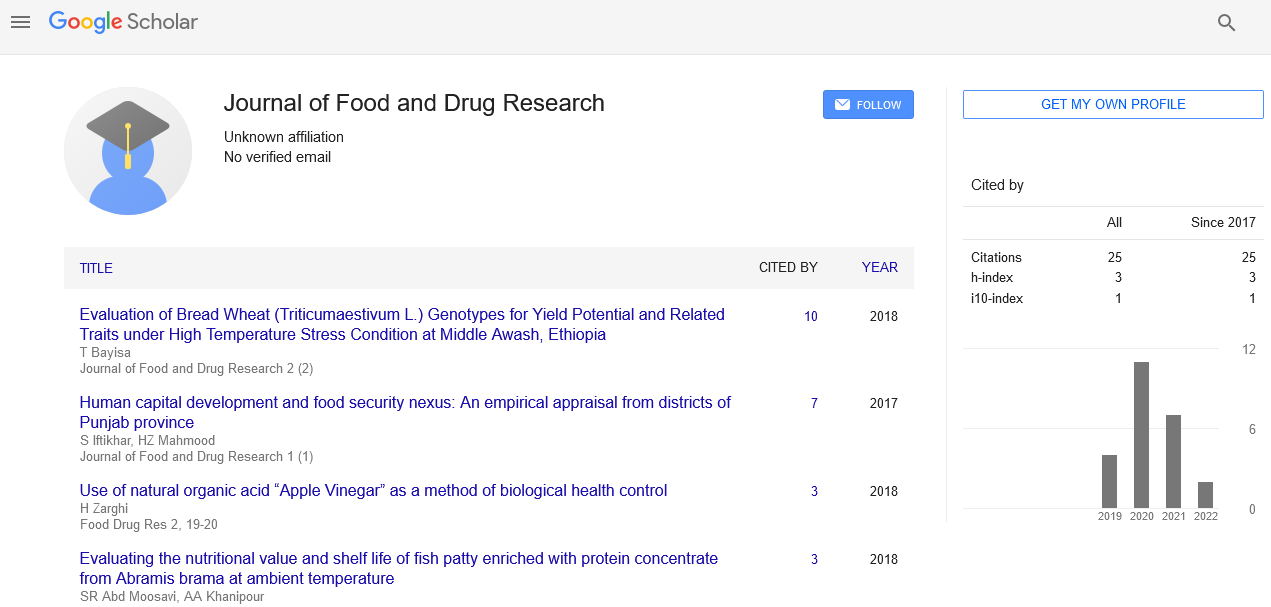A look at food science
Received: 28-Aug-2017 Accepted Date: Aug 29, 2017; Published: 29-Aug-2017
Citation: Eduardo Medina. A look at food science. J Food Drug Res. August-2017;1(1):1.
This open-access article is distributed under the terms of the Creative Commons Attribution Non-Commercial License (CC BY-NC) (http://creativecommons.org/licenses/by-nc/4.0/), which permits reuse, distribution and reproduction of the article, provided that the original work is properly cited and the reuse is restricted to noncommercial purposes. For commercial reuse, contact reprints@pulsus.com
Introduction
The Journal of Food and Drugs Research is an open access, peer review Journal providing an international platform for scientific community to share original and innovative findings in the different areas of food and drug research. The goal of the Journal comprises current and novel topics in several disciplines related to food science, food industry, food science technology, food allergies, food science technology, food proteins, food enzymes etc., as well as drugs, drug addiction, drug rehabilitation, drug reactions, drug food interaction, drug interaction, drug toxicology, drug metabolism, etc.
Scope
Nowadays, the major consumer concern is the safety of food chain which involved a complex numbers of areas as plant protection, animal feed, environment, chemical contaminants as pesticides, biological hazards, food ingredients, nutrition, food production, food packaging, food sector innovation and food consumption. Likewise, the new trends in food science research are aimed on the genetics, biochemistry, physiology and microbiology in the food chain in order to ensure the food safety.
The knowledge and study of the role of certain microorganisms, like lactic acid bacteria in some fermented foods, is crucial to optimize the technological process to get better and safer products with improved sensorial and organoleptic properties. Microbial contamination is very common in the different steps of the elaboration and represents one of the main reasons in the food spoilage leading economic losses to the food industry. Also, certain foodborne pathogenic microorganisms can be present along the food chain and provoke outbreaks or health problems. The study of the microbiota by classic and molecular techniques with rapid and effective methods for detection and identification of microorganisms, as well as the application of more advances methodology as predictive microbiology, new generation sequencing methods, microbial ecology, etc., are relevant for a better understanding of the technological elaboration process in order to elaborate safe products and minimized their implications to spoilage and human health.
The chemical, nutritional and sensorial analysis is essential to elaborate high quality products. Recent research in fast emerging technologies including the findings in functional foods, bioactive compounds, probiotics, prebiotics, micro and macronutrients, food additives, nutraceuticals, food supplements, natural preservatives, etc., have revolutionized the food and nutrition concept arousing a great attraction by the increasingly demanding consumers. The properties and benefits of bioactive compounds, such as antioxidant, anti-inflammatory, antimicrobial, anticarcinogenic activities, etc., make them very interesting for human health and constitute a natural alterative of the treatment of diseases. The recovery of bioactive compounds from rich sources like byproducts and the food enrichment is a very promising field for the food industry.
The revolutionary field of the Food Science is on the rise and has an important impact in the society. The scope of Journal of Food and Drugs Research is comprehensive and provides an international forum for scientists, researchers, and others food professionals to share and discuss knowledge and new advancements in the area of food and drug research.






